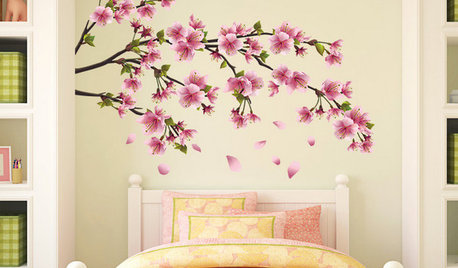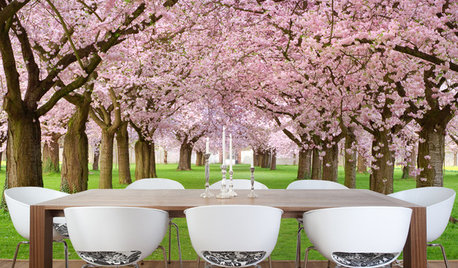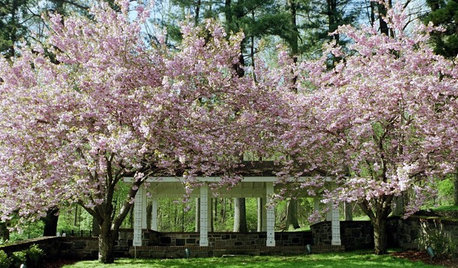cherry and cherry blossom questions
Socal2warm
9 years ago
Related Stories

SHOP HOUZZShop Houzz: Celebrate Cherry Blossom Time
Capture fleeting cherry blossoms with inspired designs
Full Story
SHOP HOUZZShop Houzz: Celebrate Spring With Cherry Blossom Decor
Enchantment is in the air with pretty pink blossoms all around
Full Story0

MORE ROOMSCherry Blossoms Spring to 100
This years marks the centennial of the beautiful trees' arrival on our shores. Below, a few ways to celebrate with your landscape and décor
Full Story
PINKCherry Blossom Pink Romances Rooms
Let the sweet nature of your rooms bloom with this prettiest of colors
Full Story
EDIBLE GARDENSHow to Grow Your Own Luscious Cherries
Nope, they’re not the easiest fruit to grow. But with spectacular blossoms and pies as possibilities, cherries are sure worth a try
Full Story
DECORATING GUIDESThinking Spring: Blossoming Branches
Cherry, Peach and Apple Flowers Make Interiors Bloom
Full Story
GARDENING GUIDESPlant Black Cherry Trees for the Birds and Bees
Plant Prunus serotina in the Central and Eastern U.S. for spring flowers, interesting bark and beautiful fall color
Full Story
MATERIALSWoodipedia: Is It Cherry or Is It Alder?
Learn the differences between these two wood types, as well as costs, sustainability and a caution about finishing
Full Story
PRODUCT PICKSGuest Picks: Help Your Home Blossom With Floral Decor
Sprinkle hints of spring around your rooms with fabrics, wall coverings and more that recall nature's charms
Full Story
Design Dilemmas: 5 Questions for Design Stars
Share Your Design Know-How on the Houzz Questions Board
Full StoryMore Discussions






Socal2warmOriginal Author
drew51 SE MI Z5b/6a
Related Professionals
Chattanooga Landscape Architects & Landscape Designers · Salem Landscape Architects & Landscape Designers · Manchester Landscape Contractors · Wilmington Landscape Contractors · Beverly Hills Landscape Contractors · Fair Lawn Landscape Contractors · Fort Wayne Landscape Contractors · Hoover Landscape Contractors · La Mirada Landscape Contractors · Red Oak Landscape Contractors · Ridgewood Landscape Contractors · San Benito Landscape Contractors · Snoqualmie Landscape Contractors · Tewksbury Landscape Contractors · Hawaiian Gardens Landscape ContractorsSocal2warmOriginal Author
drew51 SE MI Z5b/6a
parker25mv
parker25mv
parker25mv
gardengal48 (PNW Z8/9)
parker25mv
parker25mv
parker25mv
parker25mv